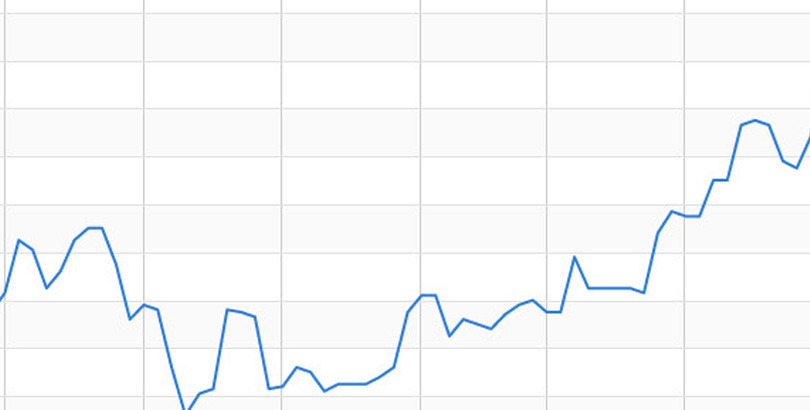
Our New Share Investment Strategy
As reported last month, we sold most of our UK shares before the Scottish referendum as a safety measure to a possible Yes vote. As it turns out, even with a no vote being the result we would by now have lost a few thousand pounds had we held onto those shares as the market has taken a slide since as evidenced by a fall in the FTSE 100 from around 6850 to today’s 6563. So with the benefit of hindsight we are very pleased we made the decision we did. A secondary benefit is that it’s reinvigorated us in terms of looking up new share prospects, re-evaluating our investment criteria, and looking for buying opportunities. Originally our plan was mainly to buy back our original holdings but preferably at better prices, however we’ve unearthed a number of shares that we think are better prospects and we’ll be sharing some of those with you over the next few articles.
So what’s the new strategy?
The new strategy is actually a group of strategies.
Core Strategy 1: Income and Value Mix
Firstly, it occurred to us that by far the safest strategy in the world of investing, especially in unpredictable times like these, is to find solid shares with great dividend yields that you can continually re-invest to compound your gains. Similar to how interest in the bank compounds year on year (i.e. in year one you make interest, in year two you make interest upon year 1’s interest, in year 2 you make interest on year 1 and year 2’s interest etc..) compound dividend re-investment really adds up the longer you are investing for.
Another reason we like the dividend/income strategy is how close it is to what we do with property investment. We look for property that gives us the best yield and that is a good value. So for our first core strategy, we’re not satisfied only with a good dividend, we’re looking for a good dividend from a company that is great value. Same as we would always aim to pay less than a house is actually worth and wouldnt overpay regardless of the rent it would earn us, we’re looking for companies that are ideally under priced but with the strong yield we want. Ideally we’re looking for these companies to have yields of 5% or more.
Our rough criteria here is:
– Yield: Greater than 5%
– Price to Earning Ratio (PER) (forward): Less than 14
– Price to Earnings Growth Ratio (PEG) (forward): Less than 1
Some examples this throws up are City of London Investment Group and Berkely Group. We’re not 100% fixed on all three criteria being met, so another one we picked up on was Redde (formerly Help Hire) which has a forward PER of 11.1 and a dividend yield of around 10%.
Factors like Price to Book Value and Return on Capital are also considered along with the strength of the accounts, balance sheet and cashflow.
When would we sell?:
We buy these shares ideally looking to hold long term, earn hefty dividends and reinvest year on year so long as nothing goes fundamentally wrong with the company.
What percentage of our portfolio?
We look for these shares to comprise over 50% of our total holdings.
Core Strategy 2: Momentum/Growth At A Reasonable Price (GAARP)
Our second batch of shares are based on momentum trading. Two of our very best shares we hold are GVC (which incidentally qualifies as an income, value and momentum stock) and Renew Holdings. What these two shares have in common is a consistent upward trajectory, staying far above the 50 and 200 day moving average lines. Common investment wisdom is that a share that has been going up consistently for some time, will most likely continue to do so and is a better pick than one that is falling. However, we dont want to invest in ‘car crash waiting to happen’ shares like ASOS was on its way up to £75 a share prior to its recent rapid fall to £21. So in combination with momentum indicators, we still incorporate value metrics to check we’re not buying into an over inflated share price that could later come crashing down on us.
Our criteria here is ideally:
– A share chart that shows upwards growth above the 50 and 200 day moving average lines.
– Relative strength that is positive over 1 month, 3 months and 1 year.
– Price to Earning Ratio (PER, forward): Less than 20
As always, quality of accounts etc. is also important. If we can find a share that fits the above criteria and also has a good dividend we are doubly happy. GVC is the best example, with P/E (f) of 9.07, yield 8%, RS 1m 18.1%, 3m 18.8% and 1yr 45.4%. Others we have found are Go Ahead Group, Redde, Sprue Aegis and Avation (which we already were holding).
When would we sell?:
These are mid to long term holdings. We intend to ‘run these winners’ until they stop winning. Once they look like they may retrace back towards the 50 day moving average we will consider selling and looking for new shares to fill their place that match the same initial criteria. Depending on the share we may not sell the entire holding, but just the original investment. That way we are left with shares we effectively didnt pay for and hopefully in the longer term will resume their upward trajectory and turn into even more valuable ‘free’ assets.
What percentage of our portfolio?
These shares will make up around 30-35% of our portfolio.
Core Strategy 3: Recovery/Value
The market always, in our view at least, tends to over react to bad news. Sometimes, this can lead to buying opportunities such as when a trading update is considered worse than it actually was. One great example at present is Regenersis which just posted a bad trading update that saw its’ share price fall from almost £3.50 to below £2.40. The market reaction looks overblown, so a brave contrarian investor could make a quick 25% on the share if it bounces back to a more reasonable £3. It’s possible the current supermarket crisis is another such opportunity, with those companies like Tesco and Sainsburys looking incredible value.
For these shares we dont have a strict criteria but we look for the following individual indicators:
– A sharp drop in share price that outweighs the seriousness of the news that caused it
– The relative strength indicator value falling below 30, indicating the share is oversold
– A break through a resistance line
As always, we only consider the shares if the P/E ratio is reasonable, the Price to Book Value is within reason and the accounts look good. I must stress, we also are very careful in selecting these shares. For instance Blinkx’s 2nd profit warning and subsequent drop today isnt something we’d jump into, there are clearly serious problems there (mostly all stemming from the Ben Edelman report which originally smashed their share price and customer confidence).
When would we sell?:
These shares are a bit more risky so therefore we are always ready to admit we got it wrong and sell them. We set tight stop losses to guard against future falls. Typically the stop loss will be 5%. On the positive side we are aiming to make 20-30% profit on these shares in a relatively short time and then cash them in. So in general, either way these are short term holds.
What percentage of our portfolio?:
As these are riskier shares, they will make up no more than 10% of our portfolio.
Core Strategy 4: Speculation – True ‘LOCO’ Investing!
These are our less sensible but more exciting trades. These will be more volatile shares where we could make or lose a large percentage, possibly in a short time. These in essence are ‘special situation’ shares. Maybe it’s a share that we spot just zooming up in value on the day and we decide to jump in to ride the wave to some quick profits. It could be a share we hear a rumour on that would push the price up if true. It could just be a new company that has a great technology that we think could take off big. Usually these will be smaller investments so as not to risk too much of our total capital.
There is no set criteria for these shares. Metrics like PER, PEG, BTV etc.. are all out of the window on these. They essentially fall into two camps: 1) very short term volatile shares and 2) speculative shares that we want to hold longer term as we thing they have the potential to multiply the investment several times over (or lose it!).
When would we sell?:
When it’s more of a day trade speculation we would sell either when we hit a set target gain or if our stop loss is hit. Again, we’d have a tight stop loss, of probably 10%. We might be aiming for 25% gain, but if it keeps going up we will run longer. On the more long term speculations we’d set a wider stop loss of up to 25%. Our growth aim would be around 35-50% before we’d sell our initial investment and leave the rest to run on.
Percentage of portfolio?:
Likely around 2%.
Conclusion
We’re quite excited about the shares we have invested in over the past few weeks and will now start analysing some of them on this site. The drop in the market has provided us with a good buying point for these shares and now we hope to sit back and enjoy both a bounce in the market and a rise in our portfolio value.
Disclosure: Of the shares mentioned in this article, we own shares in City of London Investment Group, Redde, GVC, Go Ahead Group, Avation and Regenersis. We hold no positions in Berkeley Group, Sainsburys or Sprue Aegis but may intend to invest in them at the right price. We hold no positions in Blinkx or Tesco and dont currently intend to invest in either company. As always, we are not a stock picking service and do not suggest you follow our investments. All investments in the stock market can go up or down, and you could lose some or all of your capital. Please do your own research and speak to a professional before making any investments.





